
DigitalVision/Getty Images
Why are airplane passenger windows typically below eye-level? originally appeared on Quora: the place to gain and share knowledge, empowering people to learn from others and better understand the world.
Answer by Tom Farrier, Former Director of Safety, Air Transport Association, on Quora:
Windows were recognized as a selling point fairly early in the history of passenger aviation. Aircraft are stronger and cheaper/easier to build without them, but a lot of people — particularly in the 1920s and 1930s, when flights typically were conducted at fairly low altitudes — liked the view. (Having spent the bulk of my military flying career in that environment, I have to agree.) Windows also can help at least some passengers who are feeling kind of queasy by giving them a means of re-connecting what their eyes and their sense of balance are individually reporting about what’s happening around them. Remember, humans evolved as surface-dwelling, 5 kilometers-per-hour organisms, and being in midair at hundreds of kilometers per hour provides all kinds of unnatural sensory input.
So, let’s take as given the fact that, as aviation entered the jet era, windows had to continue to be provided as a desirable amenity. Unfortunately, they turned out to create a critical and hitherto unrecognized vulnerability when installed in pressurized aircraft.
This was the DeHavilland Comet — the first jet airliner in passenger service.

This is photograph is from the collections of the Imperial War Museums. Credit: public domain.
It was literally years ahead of Boeing and Douglas in reaching the commercial market. It was kind of under-powered, but it provided an extremely comfortable ride and offered stunning vistas through their nice big windows.
The first accident involving a Comet was an in-flight break-up that occurred on May 2, 1953. “The accident was caused by structural failure of the airframe during flight through a thundersquall.” Aircraft had been lost under such circumstances before, so the manufacturer duly examined the recommendations of the Ministry of Civil Aviation “court investigation” and took a variety of actions.
However, a DeHaviland Comet registered to BOAC as G-ALYP came to grief on January 10, 1954, about 20 minutes into BOAC Flight 781 from Rome to London, breaking up in the middle of a routine radio transmission in good weather. The fleet was grounded, and modifications and inspections were made based on the company’s best estimate of what might be happening. Barely two weeks after they were returned to service, a second Comet — G-ALYY — came apart in flight on a Rome-Cairo flight.
After some out-of-the-box thinking and the construction of some novel airframe test facilities, DeHavilland and the civil aviation authorities obtained conclusive proof that the corners of the windows were the source of “stress concentrations” that led to fatigue and eventual structural failure following repeated pressurization/de-pressurization cycles (right picture).
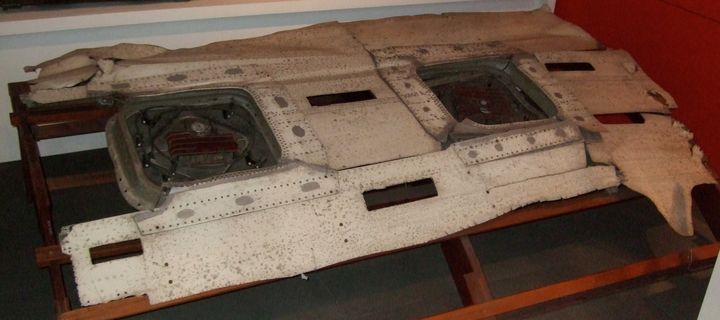
This is the actual fragment skin that peeled off the de Havilland Comet G-ALYP, retrieved from the ocean floor, that allowed investigators to figure out the flaw that caused several crashes. Photo by Tim Farley, CC BY-SA 3.0
(See Lessons Learned for an expanded discussion.)
The practical results of this finding were a half-century’s subsequent industry-wide practice of rounding off windows and making them significantly smaller.
As the pictures above show, even the Comets had their windows pretty close to the midline of the fuselage, a practice continued for generations from the Boeing 707:
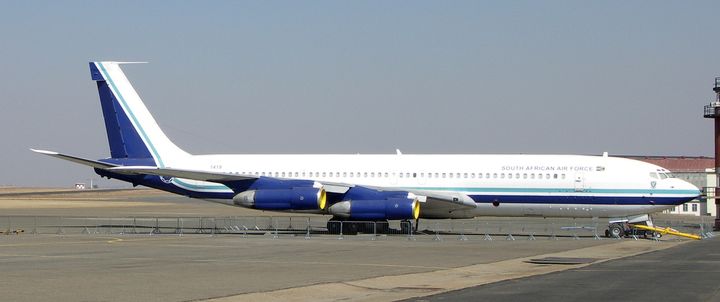
Photo by NJR ZA, CC BY-SA 3.0
To the Boeing 727:

Photo by Aero Icarus, CC BY-SA 2.0
To the Boeing 737:

To the Caravelle:

Sterling Caravelle. Photo by Eduard Marmet, CC BY-SA 3.0
To the Airbus A300:
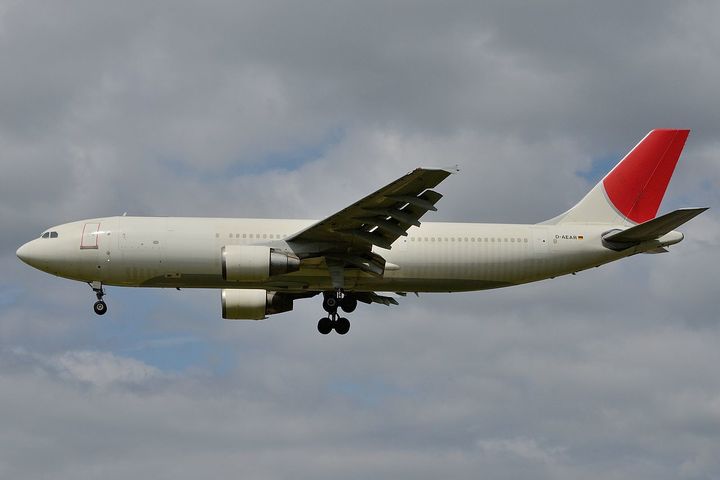
And so forth.
The practical reason for this is that placing them there allows the loads around them to be distributed as evenly as possible; the practical consequence is that, since the floor of the cabin where the passengers sit isn’t all the way at the bottom of the aircraft, the windows wind up being pretty low relative to the overall volume of the cabin itself and thus, the eye level of the passengers.
Several years ago, aviation columnist Brett Snyder noted that, “The [Boeing] 787 has windows that are 19 inches high, and overall 65% larger than what you'll usually find on an airplane.” (Flier comfort: Boeing 787 myths and facts) This was achievable partly through careful research and study and partly through the use of new manufacturing techniques. As the picture below shows, they’ve also been placed a little higher than the midline, but not much:
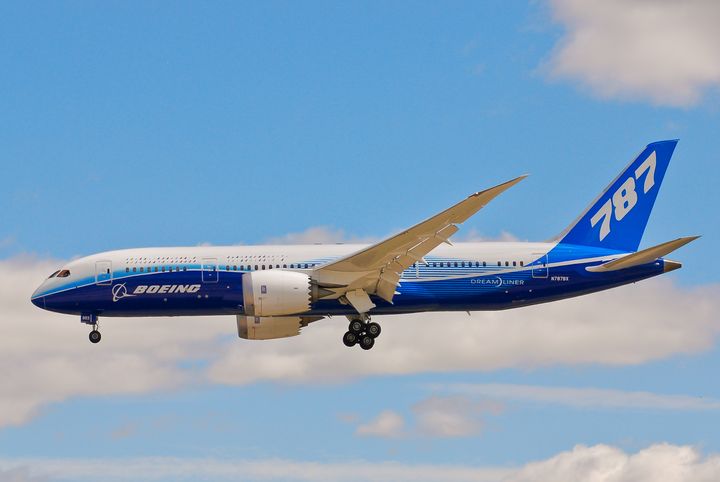
Photo by José A. Montes, CC BY 2.0
Since the windows really can’t safely extend very much higher than this, the space above them is used for overhead compartments. If you imagine the cabin floor being parallel to the line of windows and just above where the wing meets the aircraft, you can see that they’re probably about as big — and high — as is presently practical.
So why, you may ask, can the Airbus A380 and Boeing 747–400 have windows so high up on the circumference of their respective fuselages?
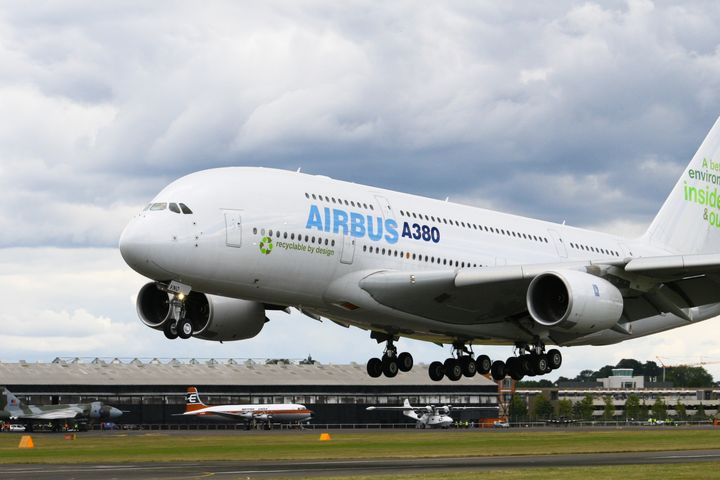
Photo by mrminibike, CC0
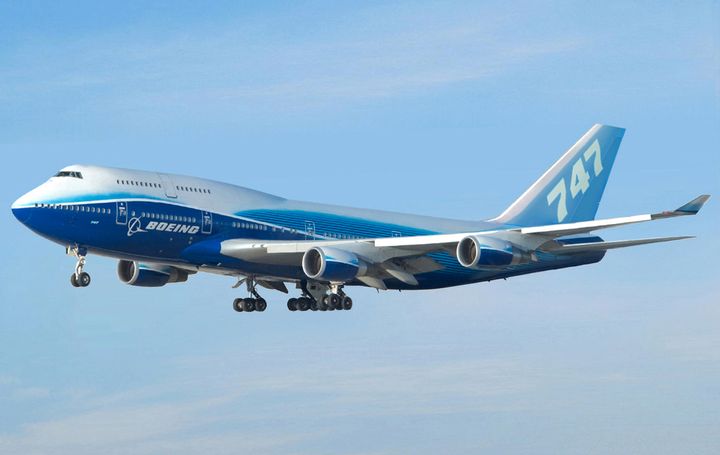
Shutterstock/Shutterstock
A fair question. Given that I have no way of modeling any of the actual stresses involved, I have to speculate that the flooring between the lower and upper decks adds a fair amount of structural strength that compensates for any lost by punching holes in the sides so high up.
Bear in mind that aircraft fuselages are basically a series of hoops, as you can see in this diagram (look above the wing to see the frames most clearly):

To a certain extent, each frame section carries its own loads. You don’t want to put too big a hole in that cylinder, lest it become subject to failing.
(I imagine there’s an ancient piece of parchment hidden away somewhere, inscribed with runes and smelling faintly of brimstone, that tells designers “This large, and no larger,” but I’ve never been able to find it.)
This question originally appeared on Quora. the place to gain and share knowledge, empowering people to learn from others and better understand the world. You can follow Quora on Twitter, Facebook, and Google+. More questions:
- Air Travel: Why hasn’t airline travel gotten any faster since the 1960s?
- Supersonic Aviation: Are supersonic passenger jets, like the one being planned by Boom Technology, a realistic commercial proposition in the 2010s?
- Airlines: As a cabin crew member, what are your funniest experiences with first-time travelers?
